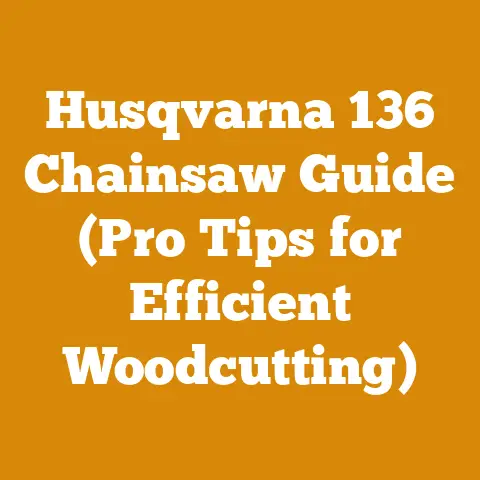Copper Sulphate Tree Killer (5 Proven Root Removal Hacks)
It seems contradictory, but the best way to save a tree is sometimes to kill it. And when that tree is unwanted, invasive, or simply in the wrong place, copper sulphate becomes a surprisingly effective tool. This guide will walk you through how to use copper sulphate to eliminate trees and, more importantly, how to deal with the root system left behind. I’ll share my experiences, lessons learned, and proven hacks to make the process as efficient and safe as possible.
Copper Sulphate Tree Killer: 5 Proven Root Removal Hacks
Copper sulphate, also known as bluestone, is a chemical compound often used as a herbicide and fungicide. While its primary purpose isn’t specifically as a tree killer, it can be effective in certain situations, particularly when dealing with stumps and roots. It works by poisoning the tree, preventing it from absorbing essential nutrients. My experience has taught me that it’s not a magic bullet, but when used correctly and in conjunction with other methods, it can be a valuable part of your arsenal.
Understanding Copper Sulphate and Its Effects on Trees
Copper sulphate’s effectiveness relies on its ability to disrupt the tree’s internal processes. When absorbed, it interferes with chlorophyll production, hindering photosynthesis. This starvation process weakens the tree and eventually leads to its death. The key is to ensure the copper sulphate reaches the root system, which is why direct application to a freshly cut stump is often the most effective method.
- Mechanism of Action: Copper sulphate disrupts the tree’s metabolic processes, inhibiting nutrient absorption and ultimately leading to its demise.
- Safety Precautions: Always wear protective gear, including gloves, eye protection, and a respirator, when handling copper sulphate. Follow the manufacturer’s instructions carefully.
- Environmental Considerations: Copper sulphate can be harmful to aquatic life and soil organisms. Use it sparingly and avoid runoff into waterways.
- Legal Restrictions: Check local regulations regarding the use of copper sulphate, as some areas may have restrictions or require permits.
Hack 1: The Stump Soak Method – Saturating the Source
This is my go-to method for dealing with freshly cut stumps. The idea is to saturate the stump with a copper sulphate solution, ensuring it penetrates deep into the root system.
Materials Needed:
- Copper sulphate crystals
- Water
- Drill with a large diameter bit (1/2 inch to 1 inch)
- Measuring cup
- Bucket
- Gloves
- Eye protection
- Watering can or funnel
Step-by-Step Instructions:
- Prepare the Stump: Cut the tree as close to the ground as possible. The fresher the cut, the better the absorption.
- Drill Holes: Drill several holes into the stump, spaced a few inches apart. The depth of the holes should be at least 4-6 inches. Angle the holes downward to maximize solution retention.
- Mix the Solution: Dissolve copper sulphate crystals in water. A common ratio is 1 pound of copper sulphate per 1 gallon of water. Stir until the crystals are completely dissolved. I often start with a slightly weaker solution (0.75 lbs per gallon) and increase the concentration if needed.
- Apply the Solution: Slowly pour the copper sulphate solution into the drilled holes, allowing it to soak into the wood. Repeat this process several times over the next few days, ensuring the stump remains saturated.
- Monitor and Repeat: Observe the stump for signs of decay. It may take several weeks or even months for the stump to completely die and begin to decompose. Reapply the solution periodically, especially after rain.
My Personal Experience: I used this method on a stubborn willow stump in my backyard. It took about three months of consistent application, but eventually, the stump became soft and easily breakable.
Measurements and Data:
- Hole Diameter: 0.5 – 1 inch
- Hole Depth: 4-6 inches
- Solution Concentration: 1 lb copper sulphate per 1 gallon water
- Application Frequency: Every 2-3 days initially, then weekly.
Takeaway: The stump soak method is effective for freshly cut stumps. Consistent application and patience are key.
Hack 2: The Root Trench – Targeting Underground Runners
Some trees, like aspen and sumac, are notorious for sending out underground runners that sprout new trees. This hack focuses on creating a trench around the main tree to sever these runners and apply copper sulphate directly to the exposed roots.
Materials Needed:
- Shovel
- Pickaxe (if necessary)
- Copper sulphate crystals
- Water
- Bucket
- Gloves
- Eye protection
- Watering can or sprayer
Step-by-Step Instructions:
- Dig the Trench: Dig a trench around the base of the tree, approximately 1-2 feet away from the trunk. The trench should be deep enough to expose the major roots (at least 6-12 inches).
- Sever the Roots: Use a shovel or pickaxe to sever any roots that are running horizontally. This will prevent the tree from sending out new shoots.
- Apply Copper Sulphate: Mix copper sulphate crystals with water (same ratio as above). Pour the solution directly onto the cut ends of the roots. You can also spray the solution onto the soil in the trench.
- Backfill the Trench: Carefully backfill the trench with soil.
My Personal Experience: I battled a sumac infestation using this method. It was labor-intensive, but it effectively stopped the spread of new shoots. I also combined this method with Hack 4 (Soil Drench) for enhanced results.
Measurements and Data:
- Trench Distance from Trunk: 1-2 feet
- Trench Depth: 6-12 inches
- Solution Concentration: 1 lb copper sulphate per 1 gallon water
- Root Severing: Sever all horizontal roots encountered.
Takeaway: The root trench method is effective for trees that spread via underground runners. Severing the roots is crucial for preventing regrowth.
Hack 3: The Foliar Spray – A Systemic Approach (Use with Caution)
This method involves spraying the leaves of the tree with a copper sulphate solution. The tree absorbs the chemical through its leaves, distributing it throughout its system, including the roots. However, I strongly advise caution with this method. It can be less effective than direct application to the stump and carries a higher risk of harming non-target plants.
Materials Needed:
- Copper sulphate crystals
- Water
- Sprayer (garden sprayer or backpack sprayer)
- Gloves
- Eye protection
- Respirator (recommended)
Step-by-Step Instructions:
- Mix the Solution: Dissolve copper sulphate crystals in water. Use a weaker solution for foliar application (e.g., 0.5 lbs per gallon of water). Start with an even weaker solution and test on a small area first to avoid burning the leaves.
- Spray the Foliage: Thoroughly spray the leaves of the tree, ensuring they are completely coated. Avoid spraying on windy days to prevent drift.
- Monitor and Repeat: Observe the tree for signs of stress, such as leaf discoloration or wilting. Repeat the application every 2-3 weeks, as needed.
My Personal Experience: I’ve only used this method as a last resort, and with extreme caution. I tested it on a small section of an invasive ailanthus tree, and while it did show some signs of stress, the results were inconsistent and I ultimately opted for other methods.
Measurements and Data:
- Solution Concentration: Start with 0.25 lbs copper sulphate per 1 gallon water and gradually increase to 0.5 lbs per gallon if needed.
- Application Frequency: Every 2-3 weeks.
- Caution: Monitor for leaf burn and adjust concentration accordingly.
Takeaway: Foliar spraying with copper sulphate is a risky method and should only be used as a last resort, with extreme caution and diluted solutions. It’s generally less effective than direct application to the stump or roots.
Hack 4: The Soil Drench – Saturating the Root Zone
This method involves saturating the soil around the base of the tree with a copper sulphate solution. The chemical is absorbed by the roots, poisoning the tree from the ground up.
Materials Needed:
- Copper sulphate crystals
- Water
- Bucket
- Watering can or hose-end sprayer
- Gloves
- Eye protection
Step-by-Step Instructions:
- Mix the Solution: Dissolve copper sulphate crystals in water (same ratio as the stump soak method: 1 lb per gallon).
- Apply the Solution: Slowly pour the solution onto the soil around the base of the tree, starting near the trunk and working outwards to the drip line (the outer edge of the tree’s canopy).
- Saturate the Soil: Ensure the soil is thoroughly saturated with the solution. You may need to apply multiple applications over several days.
My Personal Experience: I used this method in conjunction with the root trench method to control a stubborn patch of bamboo. The soil drench helped to kill off any remaining roots and prevent new shoots from emerging.
Measurements and Data:
- Solution Concentration: 1 lb copper sulphate per 1 gallon water
- Application Area: Saturate the soil from the trunk to the drip line.
- Application Frequency: Multiple applications over several days.
Takeaway: The soil drench method is effective for saturating the root zone and poisoning the tree from the ground up. It’s particularly useful when combined with other methods.
Hack 5: The Combined Approach – A Synergistic Strategy
The most effective approach often involves combining several of these hacks. For example, you could use the stump soak method on the main stump, the root trench method to sever underground runners, and the soil drench method to saturate the surrounding soil.
Here’s a sample combined approach for a tree that spreads via underground runners:
- Cut the Tree: Cut the tree as close to the ground as possible.
- Stump Soak: Apply the stump soak method to the freshly cut stump.
- Root Trench: Dig a trench around the base of the tree and sever any underground runners.
- Soil Drench: Apply the soil drench method to the soil within the trench.
- Monitor and Repeat: Monitor the area for new shoots and repeat the applications as needed.
My Personal Experience: I’ve found that the combined approach yields the best results, especially when dealing with persistent and aggressive tree species. It requires more effort, but the increased effectiveness is well worth it. I once had to remove a particularly resilient Siberian elm that kept sending up shoots for years. Using a combination of stump soaking, root trenching, and soil drenching, I finally managed to eradicate it completely.
Data and Insights:
- Synergistic Effect: Combining methods increases the overall effectiveness of copper sulphate treatment.
- Persistence: Be prepared for multiple applications and long-term monitoring.
- Adaptability: Adjust the combined approach based on the specific tree species and its growth habits.
Takeaway: The combined approach is the most effective strategy for eliminating trees and preventing regrowth. It requires more effort but yields significantly better results.
Safety Considerations When Using Copper Sulphate
Copper sulphate is a chemical and must be handled with care. Always prioritize safety when using it.
- Personal Protective Equipment (PPE): Always wear gloves, eye protection, and a respirator to protect yourself from exposure.
- Environmental Precautions: Avoid runoff into waterways. Copper sulphate is toxic to aquatic life. Use it sparingly and avoid applying it near streams, ponds, or other bodies of water.
- Storage: Store copper sulphate in a secure location, out of reach of children and pets.
- Disposal: Dispose of any unused copper sulphate according to local regulations.
- First Aid: In case of skin contact, wash thoroughly with soap and water. If ingested, seek medical attention immediately.
- Non-Target Plants: Be careful not to apply copper sulphate to non-target plants. It can damage or kill them.
Alternative Tree Removal Methods
While copper sulphate can be effective, it’s not always the best option. Consider these alternative tree removal methods:
- Manual Removal: Digging out the stump and roots by hand. This is labor-intensive but environmentally friendly.
- Stump Grinding: Using a stump grinder to grind the stump down to below ground level. This is a quick and effective method but requires specialized equipment.
- Chemical Herbicides: Using other herbicides specifically designed for tree removal. These herbicides may be more effective than copper sulphate in certain situations. Always follow the manufacturer’s instructions carefully.
- Natural Decomposition: Allowing the stump to decompose naturally over time. This is the least invasive method but can take several years. You can accelerate the process by drilling holes in the stump and adding nitrogen-rich fertilizer.
Choosing the Right Method for Your Situation
The best tree removal method depends on several factors, including the size and species of the tree, the location of the tree, your budget, and your environmental concerns.
- Small Trees: Manual removal may be the best option for small trees.
- Large Trees: Stump grinding or chemical herbicides may be more practical for large trees.
- Environmentally Sensitive Areas: Natural decomposition or manual removal may be the best options for environmentally sensitive areas.
- Budget Constraints: Copper sulphate or natural decomposition may be the most affordable options.
Dealing with Different Tree Species
The effectiveness of copper sulphate can vary depending on the tree species. Some trees are more susceptible to its effects than others.
- Aspen and Sumac: These trees are notorious for spreading via underground runners. The root trench method is essential for controlling them.
- Willow: Willows are water-loving trees and can be difficult to kill. Consistent application of copper sulphate is crucial.
- Ailanthus (Tree of Heaven): This invasive species is highly resistant to many herbicides. A combination of methods may be necessary.
- Bamboo: Bamboo is technically a grass, but it can be controlled using the same methods as trees. The soil drench method is particularly effective for bamboo.
- Pine: Pine trees can be more resistant due to their resinous wood. Ensuring deep penetration of the copper sulphate solution is key. I’ve found that scoring the stump with a chainsaw before application helps with absorption.
Long-Term Stump Management
Even after the tree is dead, the stump can still be a nuisance. Here are some options for long-term stump management:
My journey with wood processing has taught me that every tree, even one you’re removing, offers a lesson. Understanding the tree’s growth habits, its vulnerabilities, and the potential impact of your actions is crucial for responsible land management. So, approach each project with care, learn from your experiences, and always strive to minimize your impact on the environment. The satisfaction of a job well done, knowing you’ve removed a tree safely and effectively, is a reward in itself.






